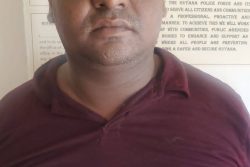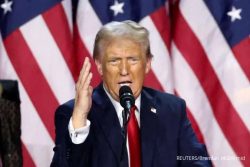‘What are you doing?’
With the ubiquity of social media networks like Facebook and Twitter, that question has been an invitation for observations that range from the innocuous (‘Writing a story’) to those that until recently only existed within the realm of speculation (‘Girl shot in Tehran’). The new information network, having irreversibly transformed global communication, has also enabled platforms for direct engagement between governments and their people, created new frontiers for diplomacy and, not least, new tools for safeguarding democracy – sometimes in 140 characters or less.
*According to White House Director of New Media Macon Phillips, the Barack Obama administration is using social media to amplify its message, make the government the most transparent in history and get citizens to participate in the policy-making process. What has the White House been doing? Pre-Obama, it was without Face-book and Twitter accounts. The White House now boasts nearly 500,000 fans and 1.7 million followers, respectively (of course, the numbers pale in comparison to President Obama’s 7.7 million Facebook fans), while webcasts, Facebook chats and YouTube Q&As with the public are becoming pretty much standard fare. “We are looking at lowering [the] barrier of participation,” Phillips explains, while noting that technology is changing the way people consume information online. He is responsible for developing and managing the Obama administration’s online agenda, including WhiteHouse.gov. He had served as Deputy Director of the Obama campaign’s new media department, which used social media to organise support for the then junior Senator’s White House bid. While he admits that being in office is a hugely different experience, Phillips says the ultimate goal is to give people ownership of the government, while “demystifying” the process. “…The final piece is to figure out a way to give the public a way to participate in their government, both in terms of asking questions and having conversations with White House and other senior policy officials but also looking at ways they can have an impact on their own community, [and] have an impact on the policy making process,” he adds.
He describes the engagement with citizens through social media as a mutually beneficial arrangement; it helps the administration by providing information about issues like health care reform, while also giving the public a window on the process. What is more, while all its content is available to the public, the administration has also been targeting specific constituencies, like small businesses. However, this approach has not been without criticism, particularly in light of the fall- out of the mixed reaction to the President’s ambitious health-care reform initiative. The White House has been accused of using social media tools as a surrogate medium for public relations, while keeping the traditional media at a relatively safe distance. But Phillips argues that the White House has not used social media as a solution to a communication problem. “Ultimately it is another tactic and ultimately we look at a larger strategy and I think the robust discussion is a great demonstration of the value of these tools, which have allowed us to put out information explaining the issues,” he says, adding “What we have been able to do with social media is to deliver how reform delivers on popular aspects rather than trying to sum up what is a complex and important reform initiative in a sound byte.” Instead, it helps drive people to resources. “In order to get people to see what you’re putting out there, you have to find them-and Twitter, Facebook, YouTube and a bunch of other social networks are places where people are going to consume information and get their news, so being there and telling them we have this content is very helpful,” says Phillips. There has been an increase in the public engagement in WhiteHouse.gov’s web activities, including online programmes. The real measure of its success, however, has been the increasing participation by people.
21st century diplomacy
Using social media, the Obama administration has been able to connect directly with the American public, but its reach extends beyond US borders. For Alec Ross, the Senior Advisor for Innovation to US Secretary of State Hillary Clinton, social media has created an entirely new field in American diplomacy. “The world we are living in is changing very fast, technology is a huge catalyst and we ought to be able to take advantage of it to service diplomatic and development goals,” he says. “With technology, instead of communication taking place government-to-government, it could now take place government-to-people, people-to-people and people-to-government, in ways that up until recently haven’t been possible.”
Ross, who served as convenor for President Barack Obama’s American Techno-logy, Media and Telecom-munications Policy Commit-tee, notes that the administration recognises that the new technology provides “extraordinary opportunities” for development, particularly in the areas of education and economic empowerment. He would know. After starting his career as a teacher in Baltimore’s inner-city, Ross went on to co-found the One Economy Corporation, which is a global non-profit organisation that uses technology to help low-income people improve their lives and enter the economic mainstream.
Not surprisingly, he links development with the continuous bridging of the digital divide. He cites the global increase in mobile handsets in a relatively short period. In April last year, there was an estimated 4.1 billion mobile handsets in the world. By February, the figure moved to 4.6 billion, representing a 10% increase, three quarters of which was among countries in the developing world, according to Ross. “The question is: How can the cellular phone then become a platform for more than just making a phone call,” he says, “How can it become a tool, a platform for people to get educational content or access to electronic market places to build wealth on?” In this regard, Ross points to the Text ‘Haiti’ campaign, which the State Department helped to set up to aid the Red Cross relief efforts following the January 12 earthquake that left an estimated 200,000 dead. The initiative helped to raise more than US$34M. “This is an example of something as unrelated as SMS being used for earthquake relief,” he explains.
Safeguarding digital frontiers
Ross also emphasises that new platforms does not mean an abandonment of core values, like freedom of expression. In this vein, he said the State Department’s focus on internet freedom has focused on the need to ensure that traditional values are accounted for in the digital age. In her internet freedom speech in January, Secretary Clinton talks about the need to make human rights reality, and the urgent need to safeguard them on the new digital frontiers. According to her, some countries have “erected electronic barriers that prevent their people from accessing portions of the world’s networks,” while information from search engine results and targeting independent thinkers who use the technology. Despite the Iranian government’s crackdown on demonstrators during elections protests, it was partially captured in real time by people using Facebook and Twitter. It included videos of the death of Neda Agha-Soltan, which went viral online.
Deputy US States Depart-ment Spokesman Robert Duguid says the blockade on information coming out of Tehran is a sign of a government that is afraid of its people. He says the State Depart-ment used Twitter to monitor the protests, going as far as asking the company to delay its plans to go down for maintenance around the same time. “We don’t have anyone on the ground in Iran… So for us just knowing the information was coming out that this real information, or at least piecemeal information that you knew was happening on the day was important,” he explains. “It was also evident to us that without social media being available that those groups who were opposing the crackdown and opposing the election results would not have a voice.”
But Duguid is also circumspect about the value of social media. “We haven’t gotten it right,” while admitting that he is unsure about where the technology will lead. Although it has served as a tool to help the US get its side of the story out, it has also provided a new frontier for disinformation. He cites the coup in Madagascar last year, and the rumour-spread by Tweets that its deposed President had sought refuge in the US embassy. The State Department used Twitter to debunk the claim, fearing that it would be repeated in the mainstream media. He says such situations are a big problem and illustrates how stories proliferate, because they are shared rapidly. “It is often very hard to disprove a completely false story,” he laments.
*Interviews were conducted during a Foreign Press Center reporting tour conducted in Washington, DC and San Francisco to explore social media and how they are being used in US foreign policy, political campaigns, and journalism.




